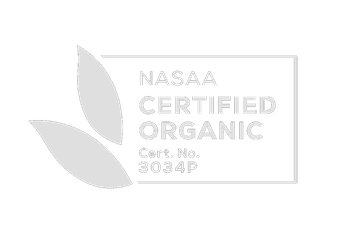This delicious salad look healthy to you? No sugar here? In this case there isn't because we've used a simple salad dressing of lemon juice and olive oil with the sweetness addition of fresh watermelon.
Prawn and olive salad with a simple salad dressing of lemon juice and olive oil with the sweetness addition of fresh watermelon.
But if you have grabbed a salad dressing from the shop it's likely you are dousing what is a healthy salad with your daily intake of added sugar.
This is the thing about sugar..... it is hidden in so many things that if we're not looking at ingredient lists we may not even realise, salad dressings being one of them.
Sugar is probably one of the hardest things to clean up in our diets. I get it. I remember back in my early 20's when I first began looking at ingredient lists and sugar content while dealing with a candida infection. It quickly dawned on me that it is in SO MANY supermarket items! Even savoury crackers for goodness sake! It was overwhelming to say the least, particularly because I have a sweet tooth.
HOW MUCH SUGAR IS A PROBLEM?
We all know that there are lots of good reasons to cut back on added sugar. Too much added sweet stuff can mess with your weight, affect your mood, trigger a cycle of sugar cravings and wreak havoc with your microbiome. But even more important is the fact that eating too much added sugar can actually damage your body on a cellular level by causing low levels of harmful inflammation.
Diets high in added sugar are thought to signal the production of pro-inflammatory molecules in the body. Over time, that can create an environment of chronic, low-grade inflammation and lead to trouble in the future.
Studies have found that people who consume around 40 grams of added sugar per day — roughly the amount in a can of soft drink or a 50g chocolate bar — show an increase in inflammatory markers both immediately after consuming it and over time.
So even if you only indulge in 1 sweet treat per day it can stack up against you. And there may be other incidental sugar you might be including in your diet from things like bread, breakfast cereals, salad dressings and sauces too.
So are we doomed if we occasionally eat something sweet? Probably not. A healthy diet can include some added sugar. The key is not overdoing it daily/regularly. And we have found that by removing sugar from your diet, your palate actually begins to pick up the sweetness of the natural sugars in fruit much more easily..... So an apple becomes your sugar fix!
WHAT'S SO BAD ABOUT SUGAR?
You may not be fully aware of how sugar impacts you.... but here are a few motivating factors to start thinking about kicking it to the curb:
It increases your risk of heart disease. This is true even if you aren’t overweight, and even if the rest of your diet is healthy.
It ramps up inflammation—the internal forest fire that underlies all of what we call the “diseases of aging.”
It makes you hungry. A diet that’s high in sugar elevates your levels of leptin, a hormone that’s your hunger trigger. Normally, leptin tells you when you’re full—but if your leptin levels keep spiking, your brain begins to ignore that message. When this happens, it doesn’t matter how much you eat… you’ll still crave more.
It causes insulin resistance. The more sugar you eat, the more insulin your body produces—and eventually your cells become resistant to that insulin. This insulin resistance is the first step on the road to Type 2 diabetes.
It feeds cancer. Cancer expert Dr. Lewis Cantley says, “As we learn more and more about cancer metabolism, we understand that individual cancers are addicted to particular things. In a lot of cancers, that's insulin—and sugar." Cut off that sugar supply, and you make it harder for cancer to get a foothold.
It alters the function of your immune system. A dose of sugar can send your neutrophils—a key part of your immune system—into a tailspin for hours.
It makes you look old. When you eat sugar, it reacts with amino acids to form compounds called advanced glycation end products, or AGEs. These age your skin, leading to wrinkles and age spots.
THE ADDICTIVE NATURE OF SUGAR
Kissing sugar goodbye is possibly one of the most important things you can do for yourself.
I know this is easier said than done. That’s because sugar is addictive, and it’s tough to break an addiction. But tough isn’t impossible! It was one of the biggest dietary changes we have made, and while we still have our moments, it becomes easier to rein in back in.
We love sugar because our brains are programmed to love it.
That’s because for millions of years, sugary foods were scarce and they were good for us. Our ancestors had to search hard to find foods like honey and berries. In small doses, these foods promoted survival, because the sugar in them came packaged with healthy nutrients like vitamins, minerals, and fibre.
As a result, Mother Nature wired us genetically to love sweet foods. In fact, each time you eat a sweet food, it gives your brain a little hit of dopamine and opioids, making you feel warm and fuzzy.
Unfortunately, sugar isn’t scarce these days—it’s everywhere and nearly always in foods that are very bad for you. And guess what: Over time, as your brain gets used to that constant chemical stimulation, it takes more and more sugar for you to feel satisfied. That’s addiction.
So how addictive is sugar?
One study found that given the choice between cocaine and Oreos, rats choose the cookies as often as the drug. In another study, researchers who asked teens to give up sugar-sweetened sodas for three days reported that participants experienced cravings, headaches, reduced well-being, and impaired concentration—all similar to symptoms of drug withdrawal.
So, when we're ready to kick sugar to the curb the next thing to think about is how to deal with the cravings. Head over to my blog post “Useful tips for managing SUGAR cravings”





